Key takeaways
- Activist teacher resources empower educators to inspire critical thinking and social change, engaging students in real-world issues.
- Mystery Science transforms science lessons into engaging experiences through storytelling and hands-on activities that spark curiosity.
- Open-ended questions and exploration encourage active participation, fostering critical thinking and deeper connections among students.
- Measuring student engagement involves observing interactions and sustained interest, rather than relying solely on traditional assessment methods.

Understanding Activist Teacher Resources
Activist teacher resources are tools and materials designed to empower educators to inspire social change and critical thinking in their classrooms. They go beyond traditional lesson plans, aiming to spark curiosity about justice, equity, and community action. Have you ever felt stuck with a textbook that didn’t quite capture the urgency or passion of the issues you care about? I certainly have, and that’s why finding resources that resonate deeply with both me and my students was a game-changer.
What makes these resources truly special is their ability to connect learning with real-world activism. I remember the moment when my students started discussing a local environmental issue after using activist-oriented lesson materials—they felt more connected and responsible. It’s not just about teaching facts; it’s about cultivating a mindset where students ask, “What can I do to make a difference?”
Understanding activist teacher resources means recognizing them as catalysts for engagement, not just content. When I embrace these tools, I find myself more motivated to create lessons that challenge the status quo and invite my students into conversations that matter. Isn’t that the essence of teaching with purpose?
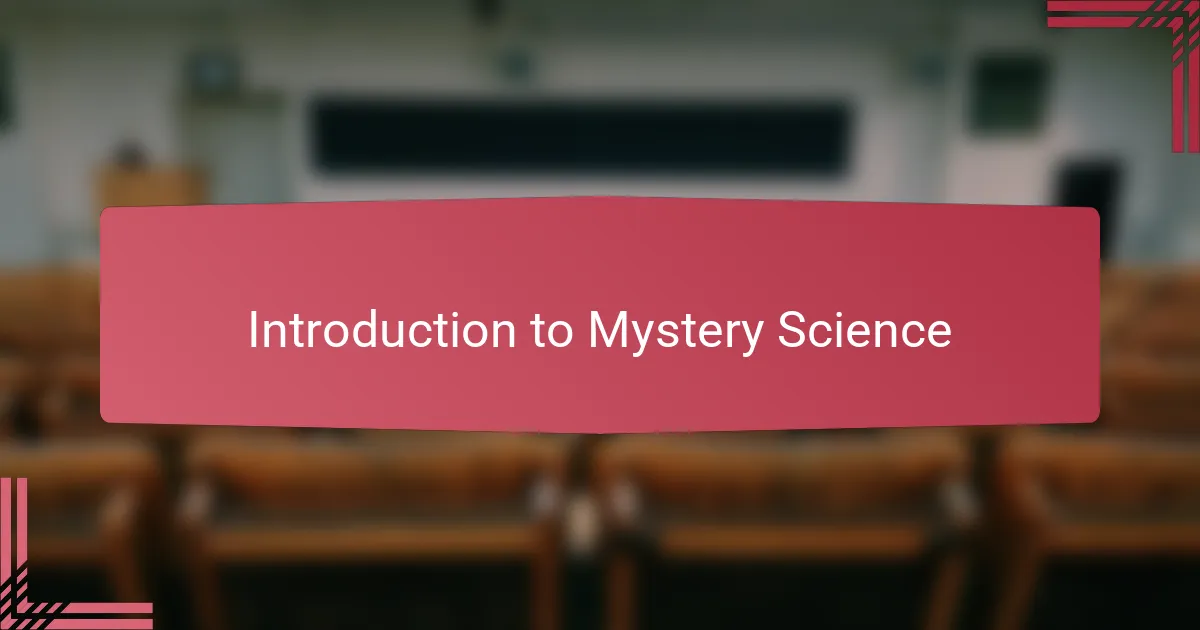
Introduction to Mystery Science
Mystery Science is an innovative platform that transforms complex scientific topics into captivating stories and hands-on activities. When I first explored it, I was struck by how it taps into natural curiosity—something every student brings to the classroom but often gets buried under dry lectures. Have you noticed how a well-crafted mystery instantly pulls you in, making you want to solve it? That’s exactly what Mystery Science does with science lessons.
What I love about Mystery Science is how it breaks down big questions into small, manageable puzzles. Instead of overwhelming students with facts, it invites them to wonder, predict, and explore. I remember a moment when my class was completely absorbed in figuring out why certain objects float or sink—no one wanted to stop the investigation. It reminded me how powerful inquiry-based learning can be.
Using Mystery Science feels like a breath of fresh air because it sparks genuine excitement about discovery. It goes beyond rote memorization, encouraging learners (and teachers!) to ask, “How does this work?” and “What else could be true?” For me, that shift in mindset is where true curiosity begins—and that’s a game-changer in any classroom.
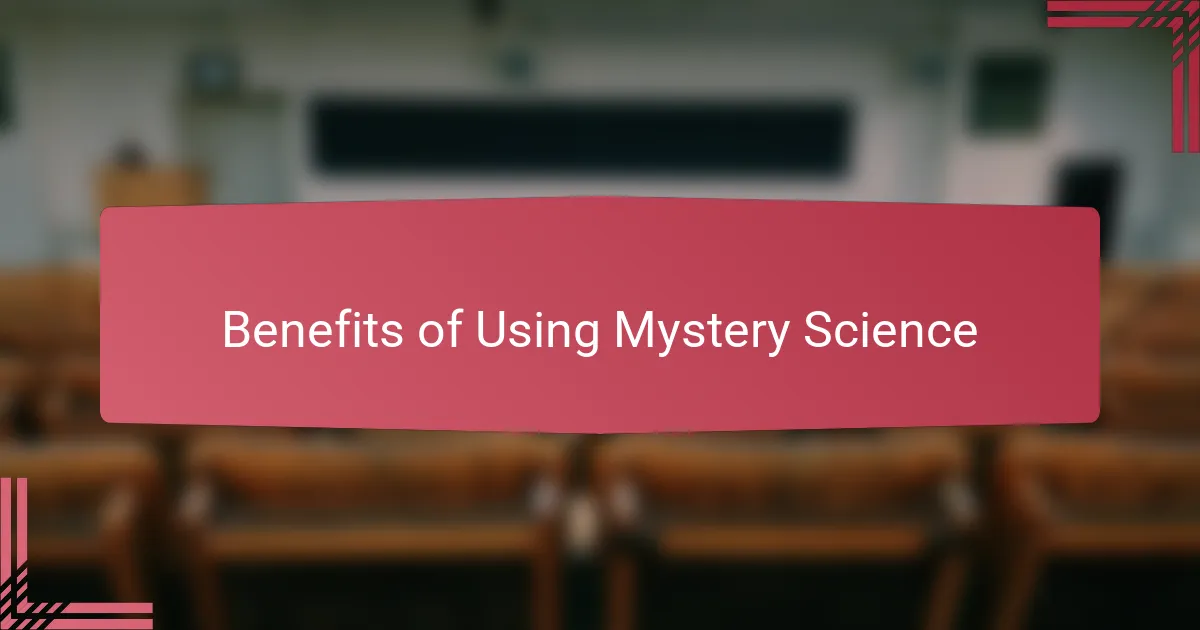
Benefits of Using Mystery Science
One of the biggest benefits I’ve noticed using Mystery Science is how it naturally draws students in through storytelling and puzzles. When lessons feel like a mystery waiting to be solved, students don’t just passively listen—they become active explorers. Have you ever seen a room full of kids so absorbed they forget to ask for recess? That’s the kind of engagement Mystery Science sparks, and it’s incredibly rewarding to witness.
Another advantage is how Mystery Science nurtures critical thinking by encouraging kids to predict and experiment rather than memorize. In my experience, this approach helps students build confidence in their ideas and develop problem-solving skills that extend far beyond the science classroom. It’s like handing them a flashlight in a dark room—they’re eager to discover what’s hidden, and that curiosity fuels deeper learning.
Finally, Mystery Science creates moments of connection—not just between students and the material, but among classmates and even between teacher and students. I often see lively discussions and shared excitement after a hands-on activity, which makes the classroom feel more like a community of curious learners. Isn’t that what we all hope for in education—to inspire a genuine love of discovery together?
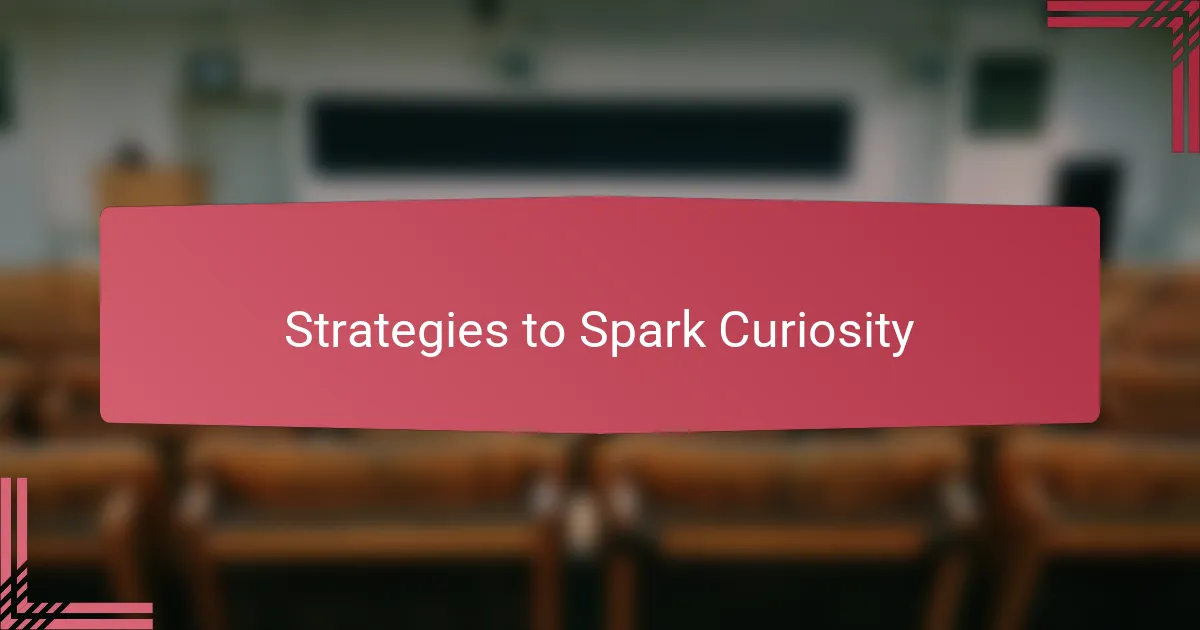
Strategies to Spark Curiosity
One strategy I rely on is posing open-ended questions that don’t have an immediate answer. When I introduce a topic with, “What do you think happens if…?” it invites students to wonder and speculate, turning their curiosity into a driving force. Have you noticed how a single question can light up a room with ideas and excitement? That moment when a student confidently shares a hypothesis always feels like a breakthrough.
Another approach I find effective is using hands-on activities that encourage exploration without step-by-step instructions. With Mystery Science, I let my students wrestle with puzzles on their own terms, which creates a space for natural discovery. It’s rewarding watching them build theories and test ideas—it feels less like teaching and more like guiding a shared adventure.
Lastly, I often weave storytelling into lessons, framing science concepts as mysteries to solve. This method taps into our innate love of stories and makes learning memorable. When I see my students eagerly asking, “What happens next?” or “How can we find out?” I know I’ve sparked something deeper than just knowledge—I’ve sparked genuine curiosity.
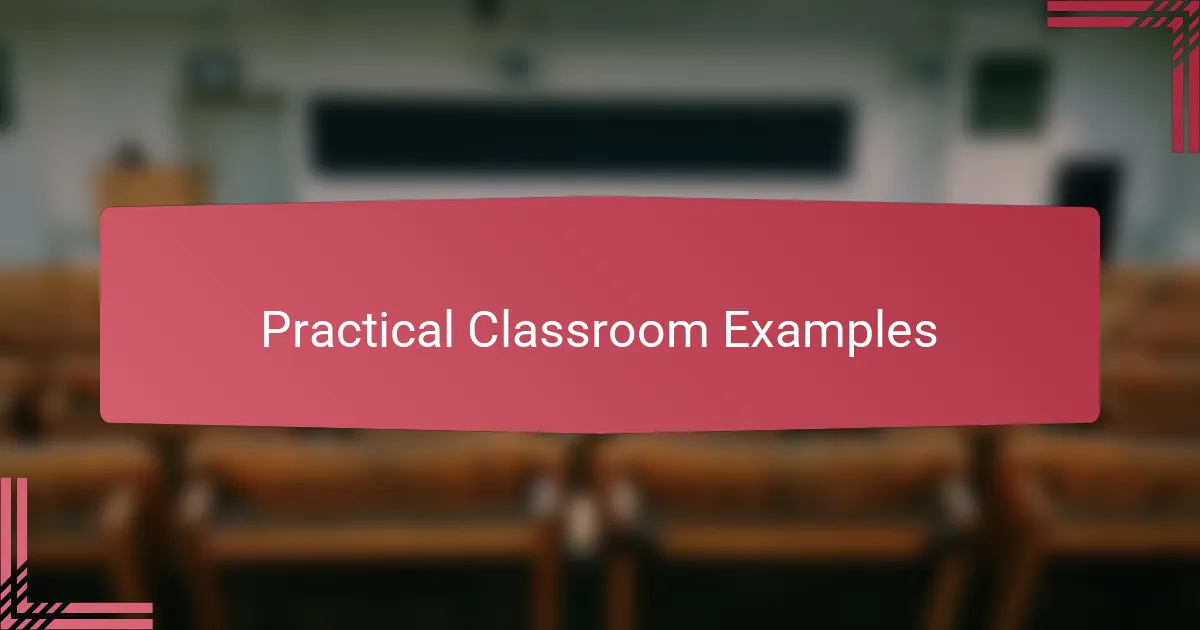
Practical Classroom Examples
I still remember the day I introduced a Mystery Science lesson on animal adaptations. Rather than starting with facts, I presented a puzzling scenario: “Why do some animals blend into their environments while others don’t?” The room buzzed with excitement as students brainstormed ideas, eager to test their theories with hands-on activities. It felt like curiosity was contagious, spreading from one eager mind to the next.
Another moment that stands out involved a simple floating and sinking experiment. Instead of telling students what would happen, I asked, “What do you think will float, and why?” Their predictions led to lively debates and surprises that made the science feel real and personal. Watching them connect the dots themselves—now that’s when learning truly clicks for me.
Sometimes, I even let the mystery unfold over several days, giving students time to revisit ideas and share new discoveries. This slower pace encourages deeper thinking and keeps curiosity alive long after the initial lesson ends. Have you noticed how mystery, when done well, creates a classroom culture where questions are just as important as answers? That’s exactly what I witnessed with Mystery Science.
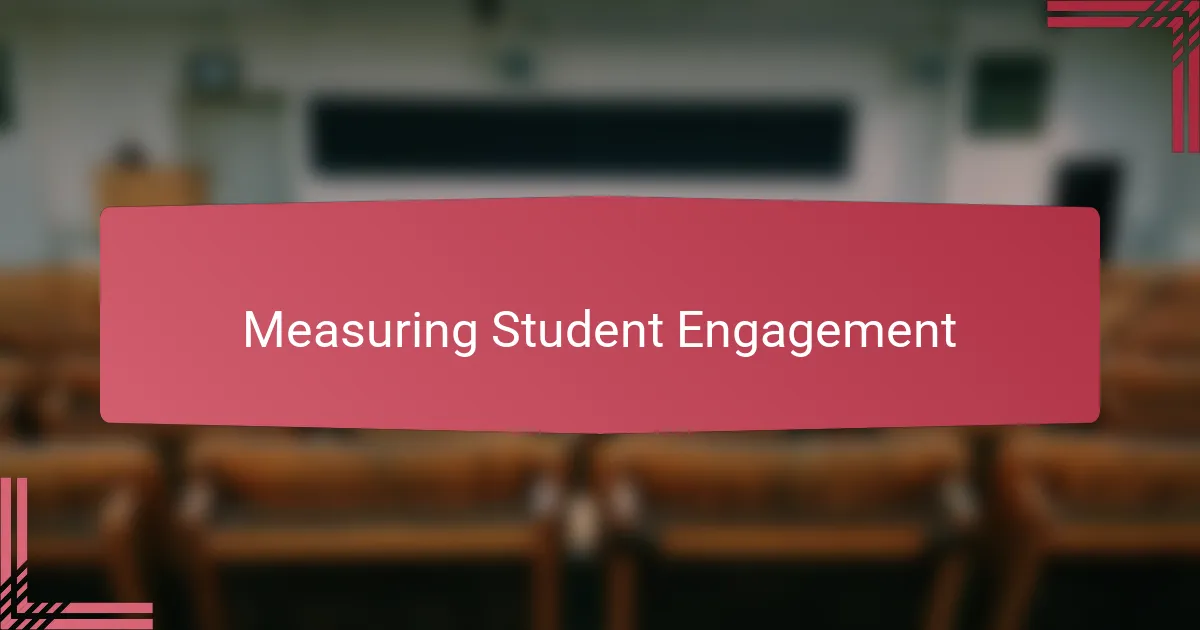
Measuring Student Engagement
Measuring student engagement can feel tricky, can’t it? I’ve often found myself looking beyond traditional quizzes to capture those moments when students are truly hooked—when their eyes light up, or they lean in closer, eager to participate. For me, it’s those subtle signs—the spontaneous questions, the animated discussions—that tell the real story of engagement.
One approach I use is observing how students interact during Mystery Science activities. Are they making predictions with enthusiasm? Do they stay curious even when the answers aren’t immediate? I’ve noticed that engagement flourishes when students are invited to wrestle with puzzles on their own, and those moments of struggle often reveal the deepest learning.
Sometimes, I ask myself: How do I know if the curiosity I sparked is lasting? Tracking participation over time, like which students revisit concepts or share ideas beyond the lesson, gives me clues. It’s not just about whether they get the right answer, but whether they want to keep exploring—and that, to me, is the true measure of engagement.